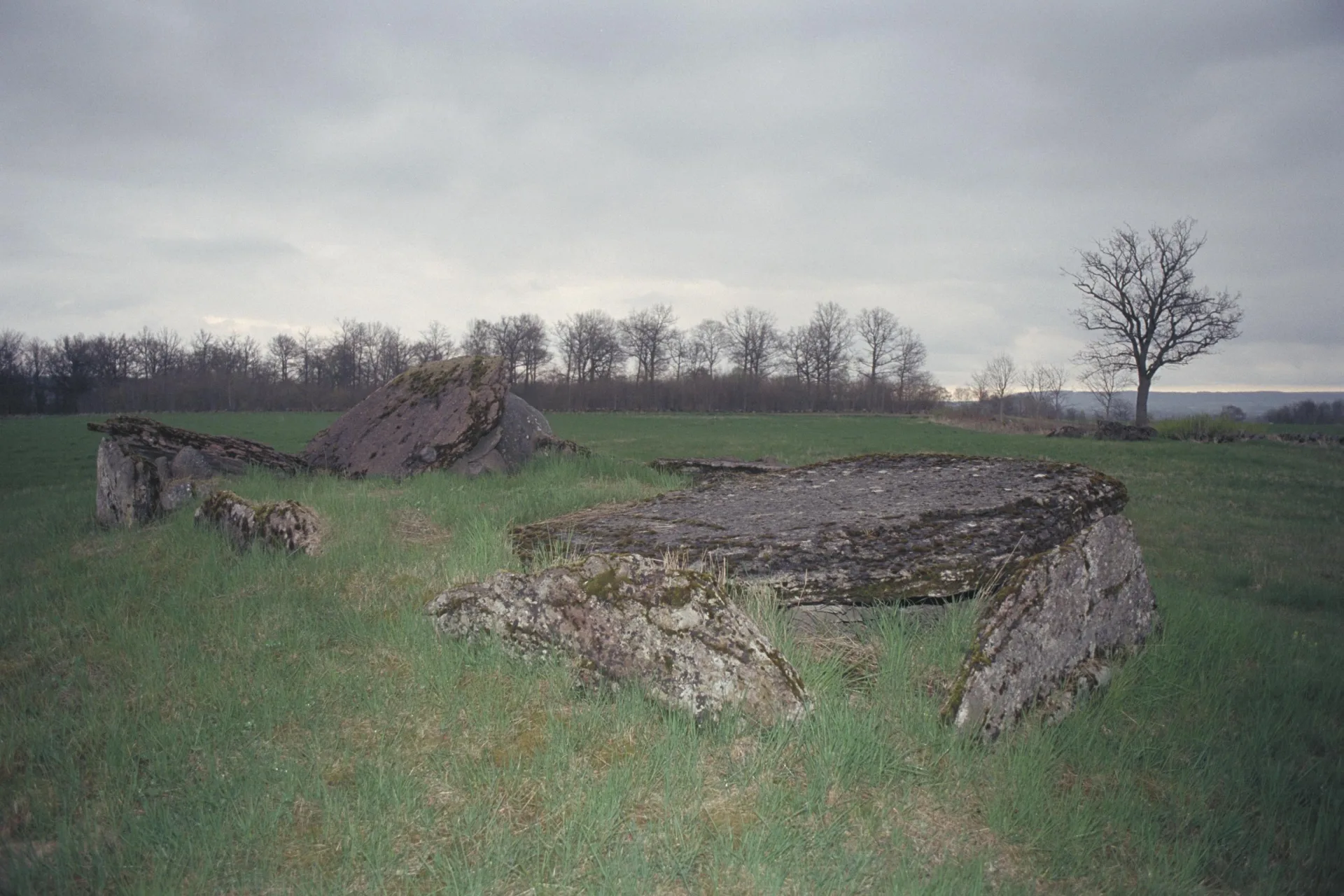Paleolithic Period
The beginning of the Palaeolithic period is usually marked by the oldest known tools made by humans (Homo), around 2.6 million years ago. The oldest fossils of the genus Homo (Homo habilis) are about 2.8 million years old and were found in Africa. Interestingly, the world’s oldest known stone tools are around 3.3 million years old, made by species considered transitional between apes and Homo.
The earliest Paleolithic culture is called the Oldowan tradition, in which people made tools by striking flakes from natural stones, called nodules. This was followed by the Acheulean tradition, known for tools like the hand axe, used for chopping and cutting.
Migration from Africa
For a long time, humans lived only in Africa. Around 1.8 million years ago, humans began leaving the continent. The first species to migrate was Homo erectus and other erectines.
Although humans left Africa 1.8 million years ago, it took time to colonize the relatively cold Europe. The oldest known European finds are 1.4 million-year-old tools from western Ukraine, followed by slightly younger finds from France and Spain. These are linked to Homo erectus and Homo antecessor, part of the erectines.
Another early European species was Homo heidelbergensis, likely an ancestor of the Neanderthals. It is considered a transitional form between erectines, Neanderthals, and possibly Homo sapiens. Neanderthals were the first humans adapted to cold climates and developed outside Africa.
The oldest traces of humans in Europe come from Ukraine, Spain, France, and Italy. Early traces in England show humans moving north during warmer periods. In addition to stone and occasional bone tools, 400,000-year-old wooden spears have been found in Germany.
Middle Paleolithic
The Middle Paleolithic roughly spans from 300,000 to 50,000 years ago, from the emergence of Homo sapiens in Africa to their first arrival in Europe. In Europe, this period is associated mainly with Neanderthals and the Mousterian culture.
Stone tool production became more advanced through prepared-core techniques known as Levallois. The use of fire also became much more common. Around 115,000 years ago, the last Ice Age began, covering northern Europe in ice.
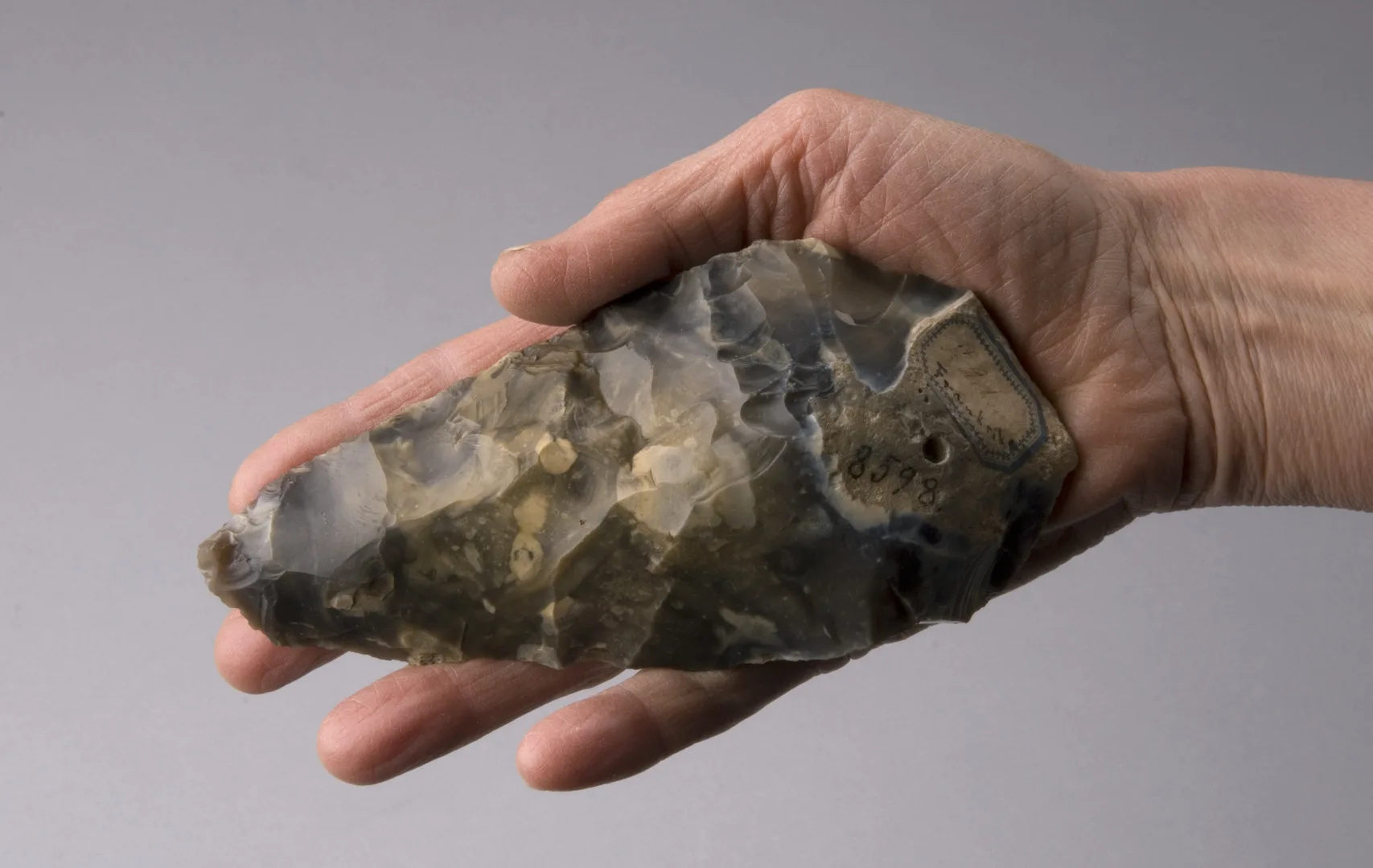
Hand axe
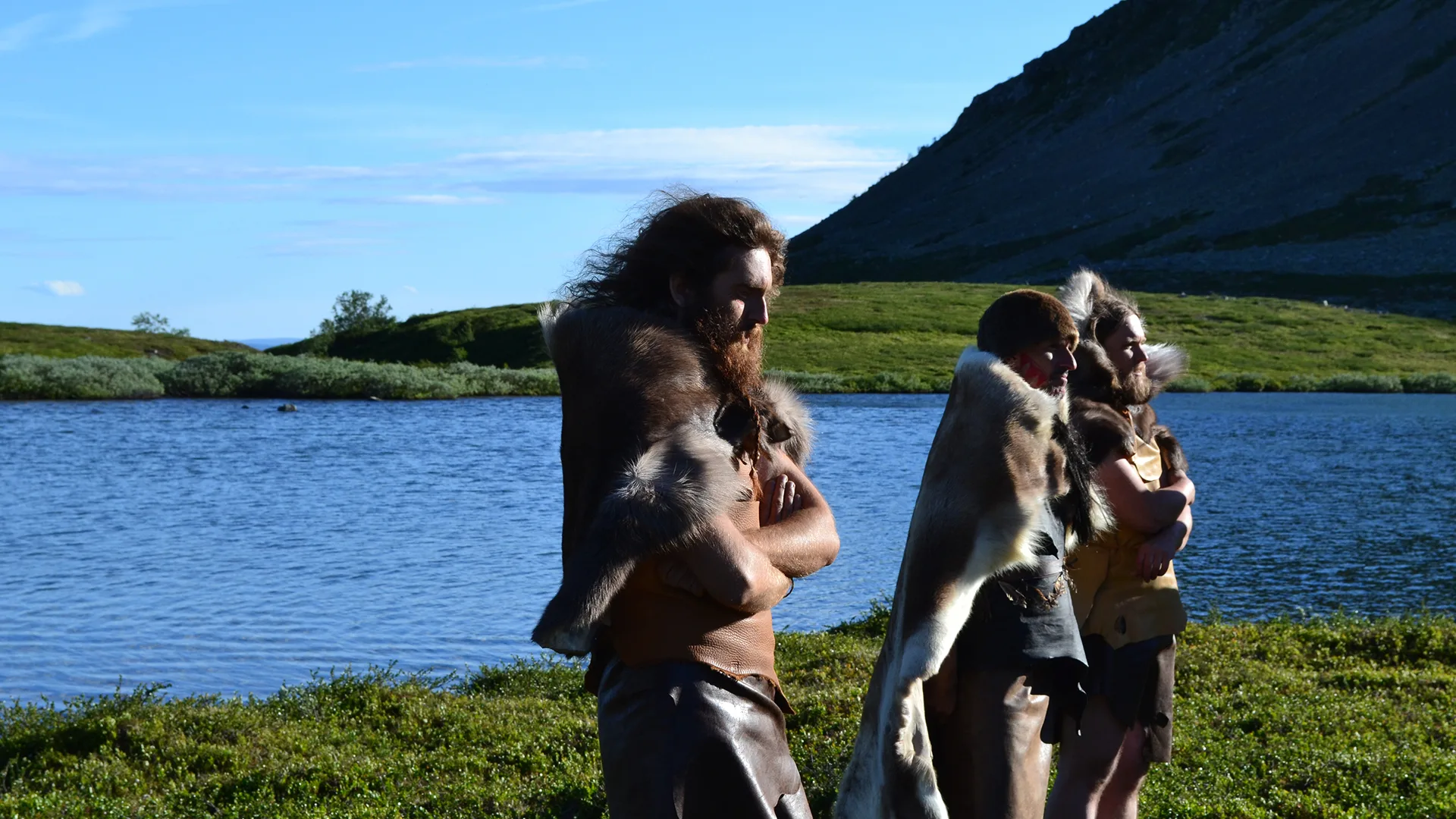
Late Paleolithic
Our own species, Homo sapiens, reached Europe around 45,000 years ago. Initially, they coexisted with Neanderthals, who would soon disappear. This period, where traces of our species appear in Europe, is called the Late Paleolithic.
Art and cave paintings
The beginning of the Late Paleolithic saw many major changes. Finds are now more varied, including graves with red ochre and evidence of art. The period is known for small figurines, such as the Venus of Willendorf, and for cave paintings, such as those in Lascaux, France, and Altamira, Spain. Tools became more varied, with blade techniques producing knives, scrapers, and drills.
Bone and antler objects are often richly decorated. Structures made from mammoth bones, for example in present-day Ukraine, have also been found. Several archaeological cultures have been identified, including the Aurignacian, Gravettian, Solutrean, and Magdalenian.
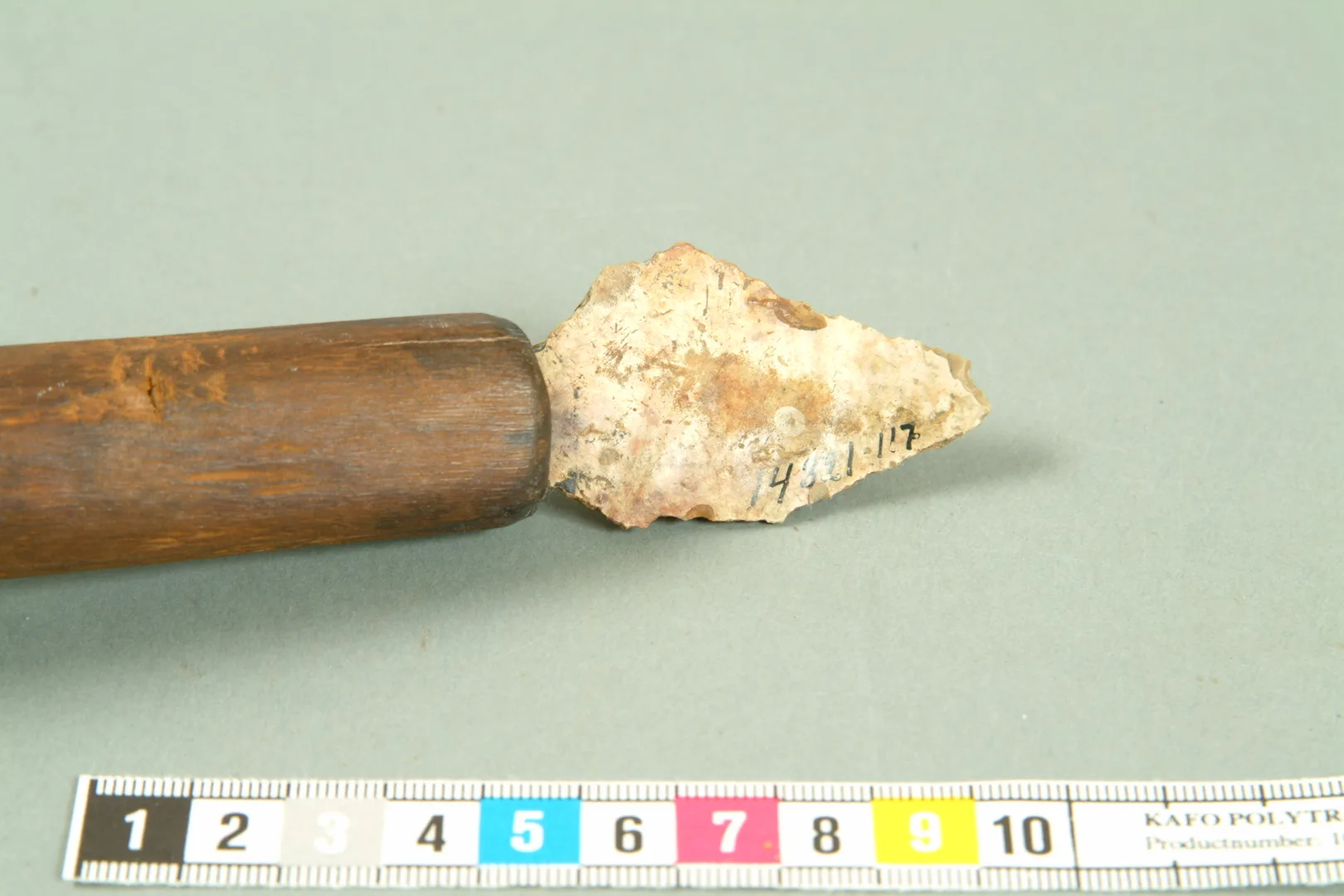
Tanged point from the Late Paleolithic
Flint found in Torskär, Bohuslän. Mounted in a reconstructed shaft.
On view at Historiska museet in the exhibition Forntider 1
The first humans in Sweden
Early humans may have occupied what is now Sweden during warm periods, but glacial ice has largely destroyed older traces. The oldest traces of humans come from southern Sweden, dating from the end of the last Ice Age, roughly just before 12,000 BC to around 9500 BC.
Humans followed reindeer into the tundra left by retreating ice. Other attractive environments existed on the west coast, where freshwater from melting ice created favorable conditions for marine hunting and fishing. People lived in these areas seasonally, returning regularly to the continent. Cultures present in Sweden at this time included the Hamburg culture, Bromme culture, and Ahrensburg culture.
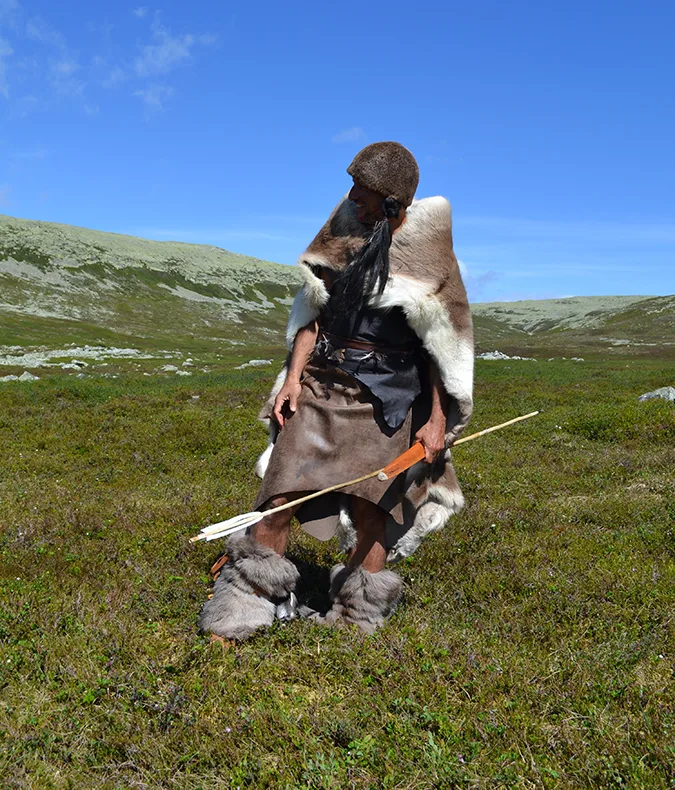


From the filming of Arkeologens Dotter (UR 2018). Photo: Linda Wåhlander, The Swedish History Museum/SHM.

